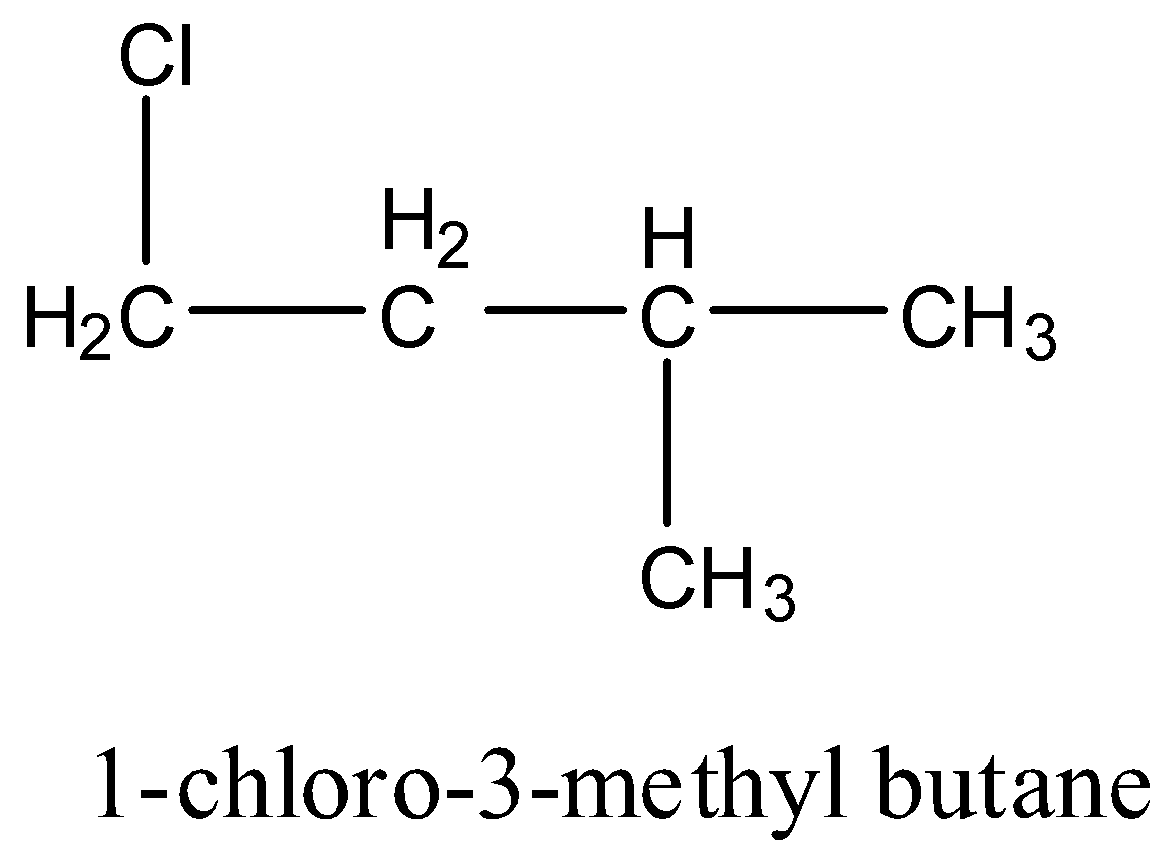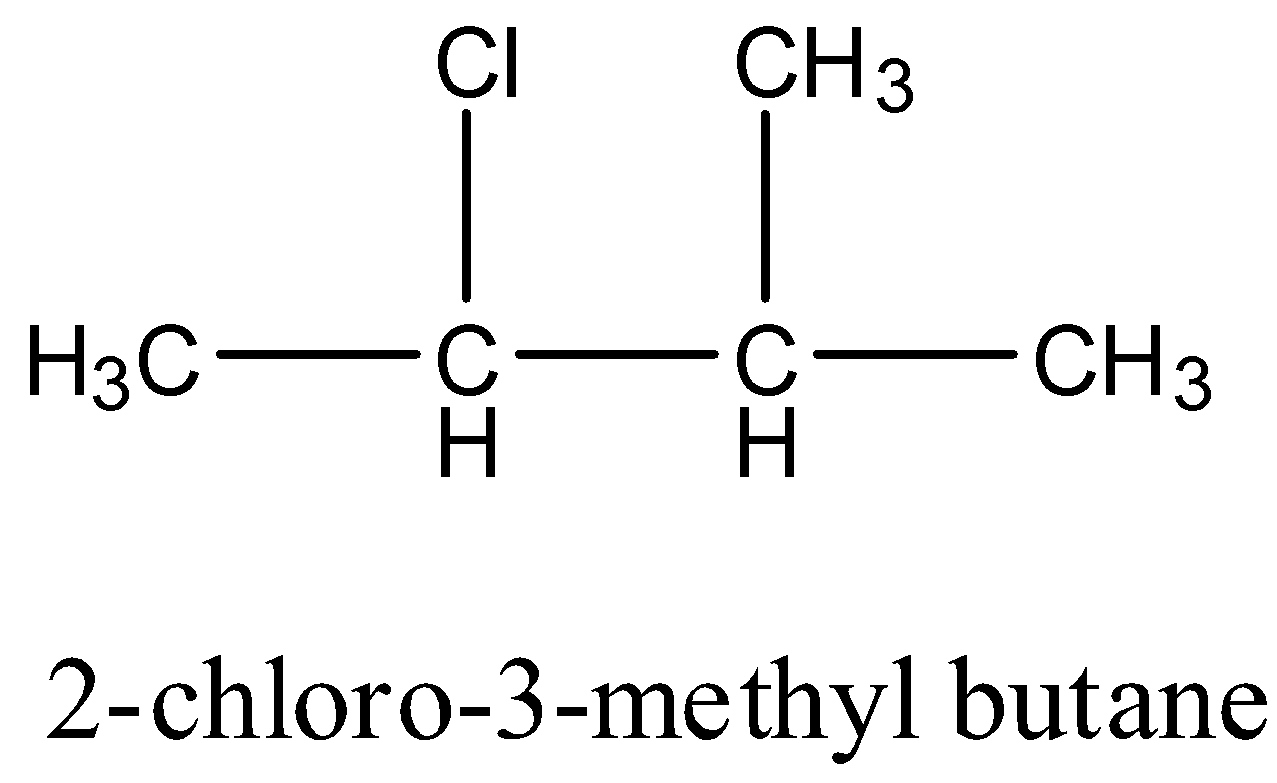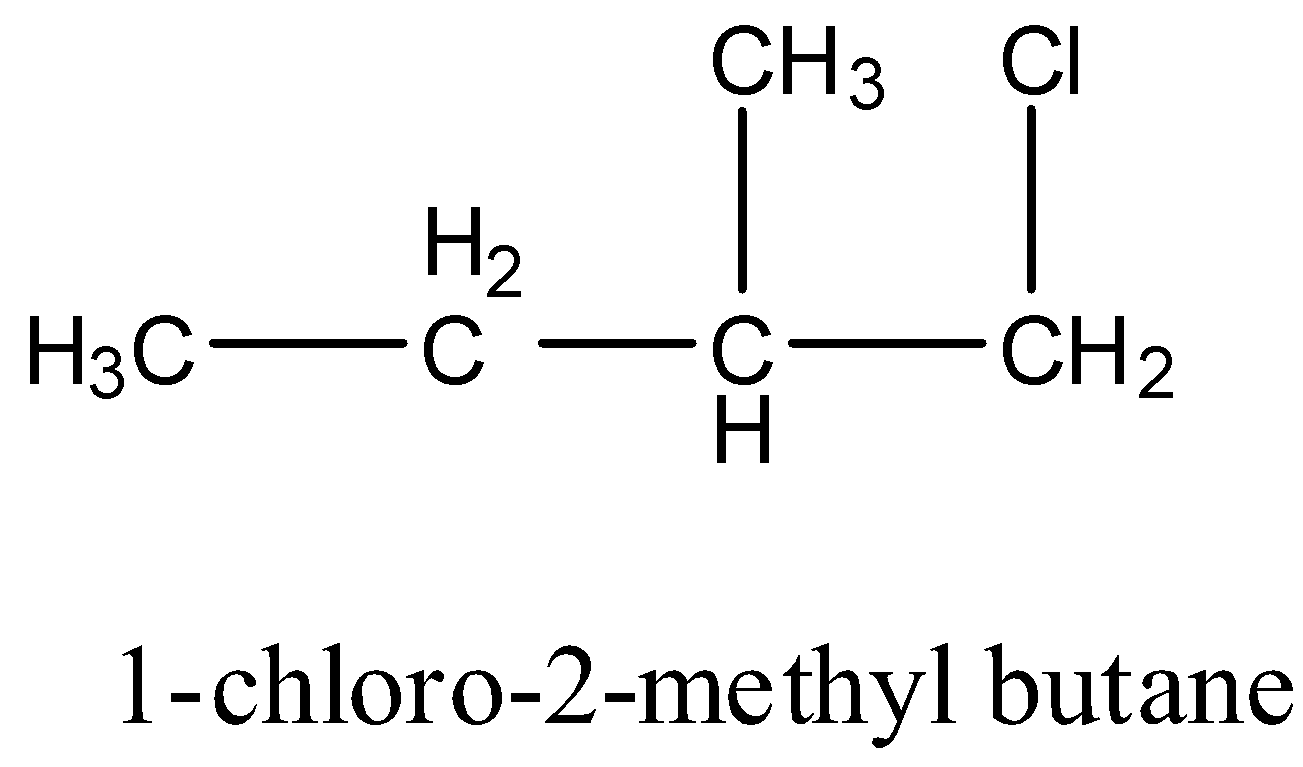
How many chiral compounds are possible on the monochlorination of 2-Methyl butane?
(a) 8
(b) 2
(c) 4
(d) 6
Answer
563.4k+ views
Hint: If all the atoms or groups attached to the carbon atom are not similar, such carbon is called asymmetric carbon or chiral carbon. If any of the atoms or groups is repeated then the carbon is achiral. Monochlorination means one hydrogen atom from the compound is replaced with one chlorine atom.
Complete step by step answer:
Compounds which are non-superimposable on their mirror image are called chiral compounds and the carbon should have all the groups or atoms attached to it differently.
2-Methyl butane is an organic chemical compound that has a chain of four carbon atoms and the second carbon atom has a methyl group attached.
Monochlorination means one hydrogen atom from the compound is replaced with one chlorine atom. So, the monochlorination of 2-Methyl butane will produce 4 different products. These are 1-chloro-3-methyl butane, 2-chloro-3-methyl butane, 2-chloro-2-methyl butane, and 1-chloro-2-methyl butane.
1-chloro-3-methyl butane: It doesn’t have any carbon atom which has four different groups hence it is achiral. The structure is given below:

2-chloro-3-methyl butane: It has one carbon atom that has four different groups. Hence this compound is chiral. The structure is given below:

2-chloro-2-methyl butane: It doesn’t have any carbon atom which has four different groups hence it is achiral. The structure is given below:

1-chloro-2-methyl butane: It has one carbon atom that has four different groups. Hence this compound is chiral. The structure is given below:

So, the correct answer is “Option B”.
Note: If the compound at least has a chiral carbon atom, that compound should be considered as a chiral compound. The chiral carbon of the compound is also known as the stereocenter of that compound.
Complete step by step answer:
Compounds which are non-superimposable on their mirror image are called chiral compounds and the carbon should have all the groups or atoms attached to it differently.
2-Methyl butane is an organic chemical compound that has a chain of four carbon atoms and the second carbon atom has a methyl group attached.
Monochlorination means one hydrogen atom from the compound is replaced with one chlorine atom. So, the monochlorination of 2-Methyl butane will produce 4 different products. These are 1-chloro-3-methyl butane, 2-chloro-3-methyl butane, 2-chloro-2-methyl butane, and 1-chloro-2-methyl butane.
1-chloro-3-methyl butane: It doesn’t have any carbon atom which has four different groups hence it is achiral. The structure is given below:

2-chloro-3-methyl butane: It has one carbon atom that has four different groups. Hence this compound is chiral. The structure is given below:

2-chloro-2-methyl butane: It doesn’t have any carbon atom which has four different groups hence it is achiral. The structure is given below:

1-chloro-2-methyl butane: It has one carbon atom that has four different groups. Hence this compound is chiral. The structure is given below:

So, the correct answer is “Option B”.
Note: If the compound at least has a chiral carbon atom, that compound should be considered as a chiral compound. The chiral carbon of the compound is also known as the stereocenter of that compound.
Recently Updated Pages
Master Class 12 Social Science: Engaging Questions & Answers for Success

Master Class 12 Physics: Engaging Questions & Answers for Success

Master Class 12 Maths: Engaging Questions & Answers for Success

Master Class 12 Economics: Engaging Questions & Answers for Success

Master Class 12 Chemistry: Engaging Questions & Answers for Success

Master Class 12 Business Studies: Engaging Questions & Answers for Success

Trending doubts
What are the major means of transport Explain each class 12 social science CBSE

Which are the Top 10 Largest Countries of the World?

Draw a labelled sketch of the human eye class 12 physics CBSE

How much time does it take to bleed after eating p class 12 biology CBSE

Explain sex determination in humans with line diag class 12 biology CBSE

Plot a graph between potential difference V and current class 12 physics CBSE




